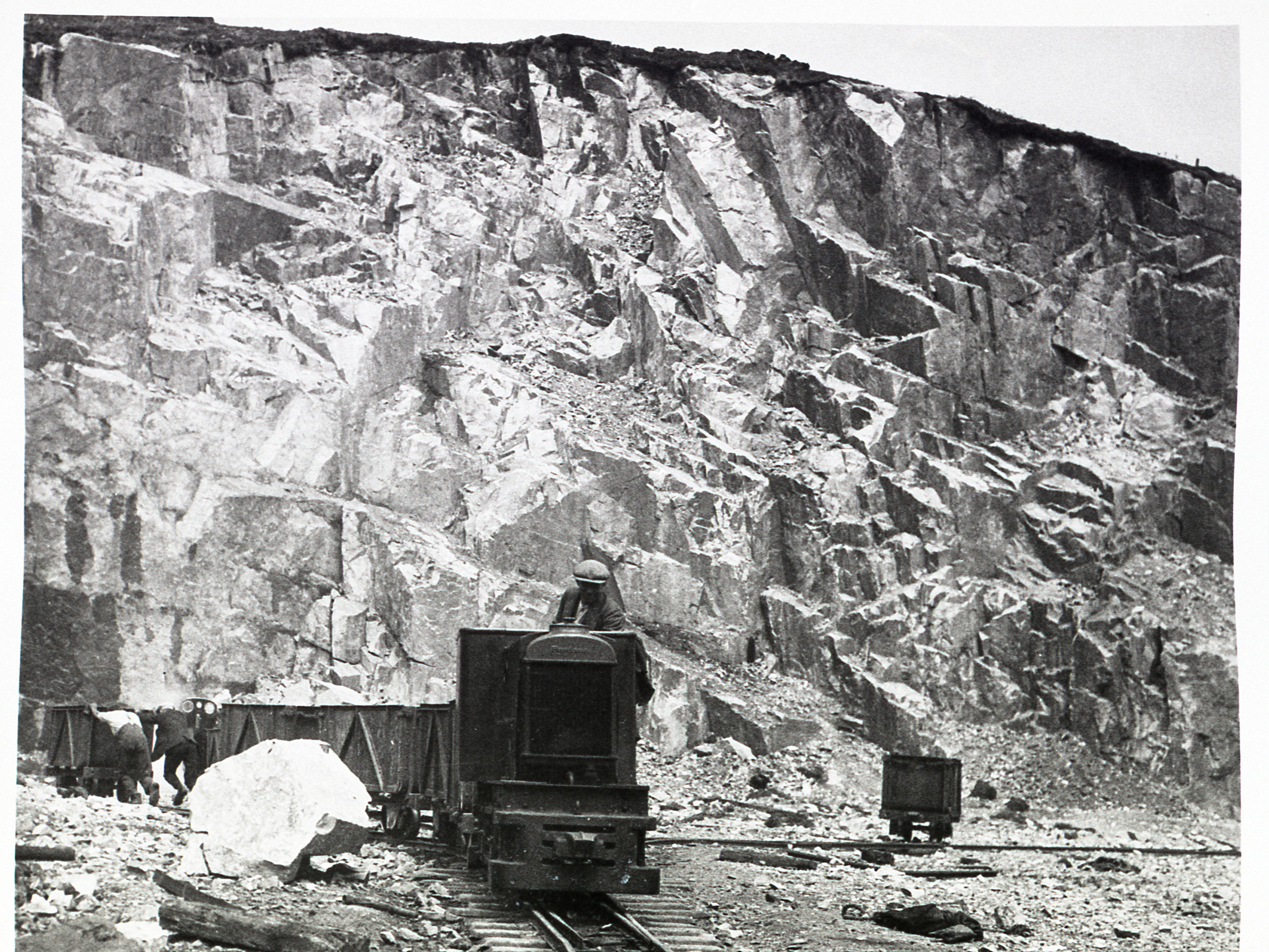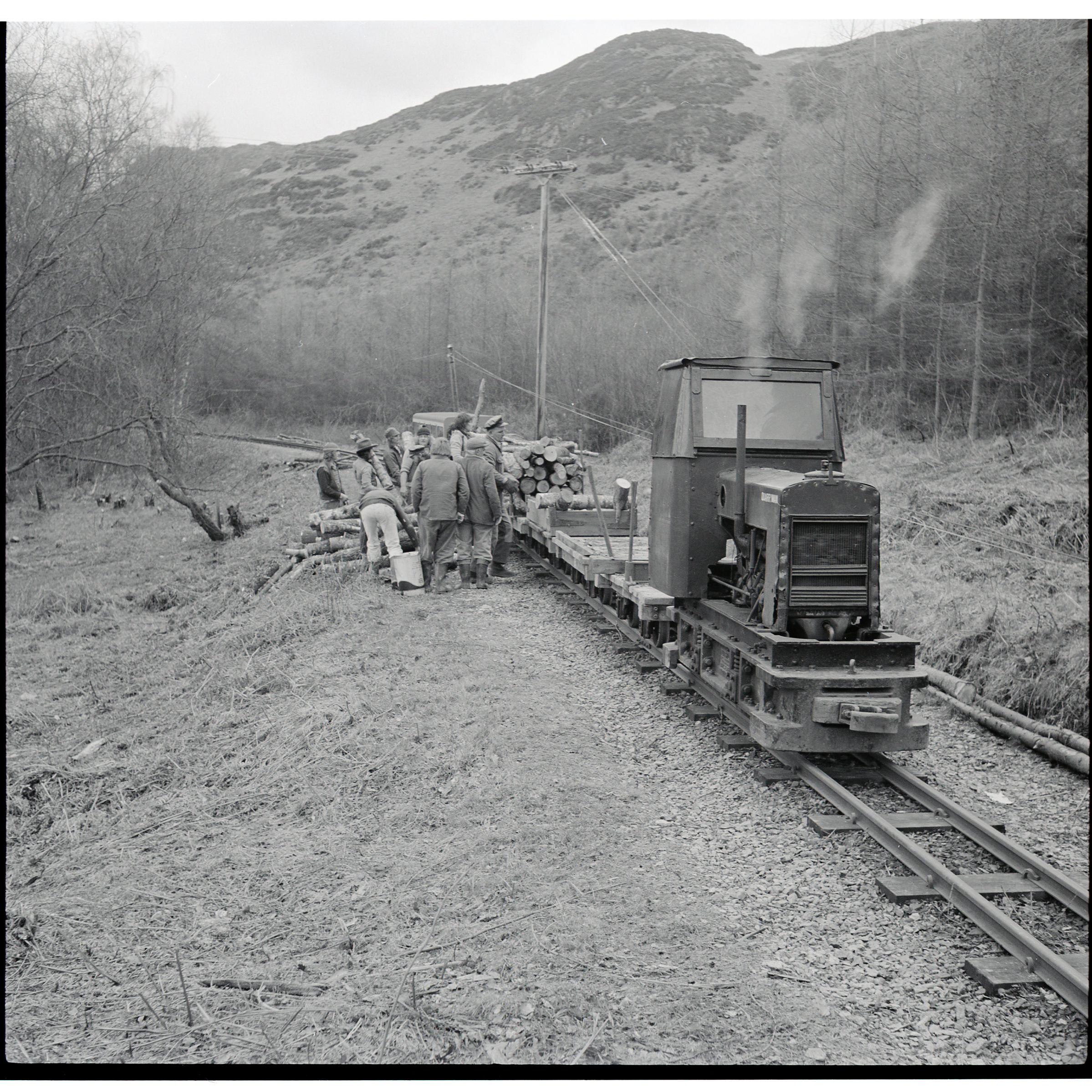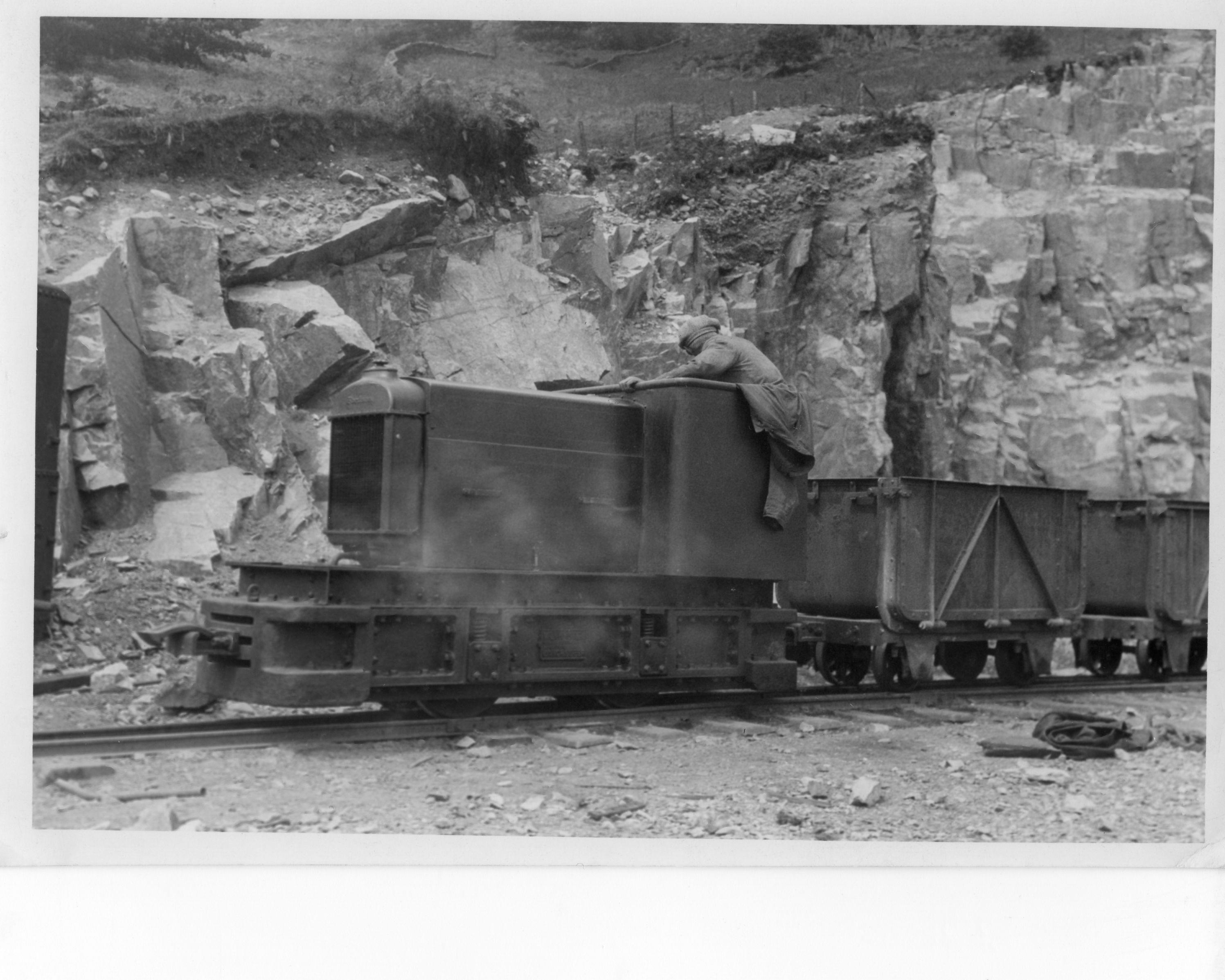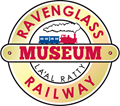Story
Built in 1926 by Muir-Hill of Trafford Park Manchester, Quarryman is a four wheeled petrol/ TVO (tractor vaporising oil) powered loco that was designed to pull granite trains from Beckfoot Quarry. Purchased from new by the Ravenglass & Eskdale Railway, this unusual looking engine, with its American design Fordson agricultural tractor engine, was a familiar sight on the railway until it was added to our museum collection in the 1980s.
Working Life
With its robust and simple Fordson tractor design, Quarryman took over when the ageing steam engines of the day struggled with the heavy loads from the quarry. In fact, this workhorse of a locomotive proved so effective that two similar engines were ordered by the railway company in 1929. Both were used on the railway until 1953 when the quarry closed.

Photo: RRM Archive- Quarryman at Beckfoot Quarry by Mary Fair,1927
One of these engines was eventually scrapped while the other, having being altered to look more like a steam engine, became known by the nickname Pretender and was used regularly to pull passenger trains. Overhauls in more recent years gave us the engine we now know as Perkins. The scrapped engine however, continued to serve the railway as its parts were used to maintain Quarryman in working order.
Although designed to pull the heavy granite trains from Beckfoot, Quarryman has had other roles at the R&ER over the years. In the 1950s when stone traffic ceased on the railway, Quarryman diversified into other areas of operation on the railway, being regularly used for trackwork as well as the occasional passenger train.

Photo: RRM Archive- Track gang and Quarryman at Muncaster Mill, 1969.
During its working life, the loco has had a variety of Fordson engines as well various cab tops. Today, it continues to represent the original Muir-Hill design but with an upgraded engine. The actual Fordson engine model and external fittings were changed in service when occasion demanded and evidence of this can be found in our archive.
What makes Quarryman unique?
Quarryman is a survivor of a relatively small number of its class and is now the only surviving example of the Fordson narrow gauge design. It represents the period immediately following the First World War when internal combustion engines started to become widespread.
Quarryman has a particular importance to us as, along with its fellows, it kept the stone traffic on the railway moving during WW2, making it the only source of revenue for the railway at that difficult time.

Photo RRM Archive: Quarryman and Theakston Granite Wagons, Mary Fair, 1927.
For us here at the railway, this slightly odd-looking engine clearly illustrates a once active part of our history that has otherwise been lost.
Restoration
When the loco was eventually withdrawn from service in 1982, a restoration saw it brought back to as close to its original 1926 state as possible. Supported by the dedicated volunteers of the Murthwaite Locomotive Group, Quarryman remained in a useable condition for occasional operations on the railway, mostly during special events. A test run in 2017 resulted in damage to the engine block however, thanks to spares being readily available, a replacement engine was soon acquired and fitted.
Quarryman Today
Today, Quarryman has several issues to be addressed before it can once again appear on the tracks of the Ratty. After initial inspection, it appears that the clutch on the loco has seized, which will require some dismantling. There are also issues with deterioration of the fuel tank lining which need to be addressed.
How Can You Help?
To solve these issues, we are looking to our kind supporters for help with this project. We propose to send the loco to our friends at John Fowler Engineering, so that it can be fully assessed and the required work undertaken.
We have set a target for this work at £5000. We will post progress photos where we can along the way and hope you will agree that conserving this significant part of our heritage for the future is a worthy cause.
If we are fortunate enough to raise more than is required for this project, any excess donations will be transferred over to our next restoration project.
